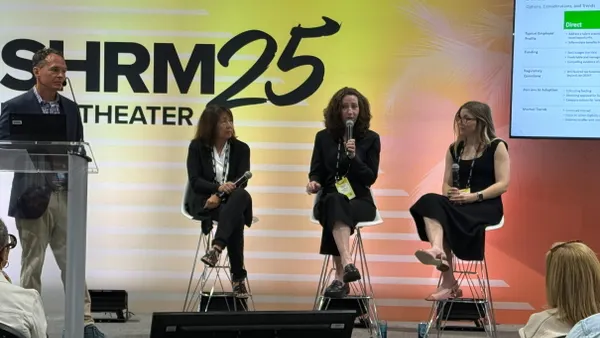Dive Brief:
- Recent research has found that employees have scant understanding of how their employer-paid health plans work – which may be driving some bad decisions both financially and health-wise for plan members, according to Employee Benefits News.
- With the rise of so-called consumer-driven health plans (CDHP), high deductibles are a challenge. For example, EBN reports, a decade ago only 10% of employees had health insurance deductibles of $1,000 or more for single coverage and today that number is 50%.
- With that, a crisis is unfolding: Though high-deductible plans do reduce healthcare costs when used, many employees not only don't know what the terms "deductible" or "co-pay" mean, they also just skip that doctor visits when needed. And, oddly, it may have little to do with costs, according to EBN.
Dive Insight:
Writing at EBN, Vlad Gyster, co-founder and CEO of Airbo, an engaging employee communications platform, says that even when employers subsidize workers' health savings accounts, for example, they still stay home from getting care. While the reasons may be complex, Gyster notes that the simple explanation is people don't understand how to use their plans. For example, he cites a research report that found 86% of people cannot define deductible, copay, coinsurance and out-of-pocket maximum. And people can’t properly use what they don’t understand, Gyster writes.
Clearly, if that research report is credible, there is a need for employee education, but not via high-tech tools such as cost transparency apps, EBN reports. Leaders may need to get back to the basics, teaching employees terms that they need to know to make informed decisions.
Gyster recommends employers survey employees to see how many understand basic health plan concepts. Next, send weekly emails to everyone defining each healthcare term, one term at a time.
Finally, re-survey your employees with the exact same questions to measure the change, and stay with it until they at least learn those basic concepts.
Once those terms are mastered, then employers can begin to use more sophisticated tools in creating smart healthcare consumers. And hopefully people will start going to the doctor when it's necessary.











